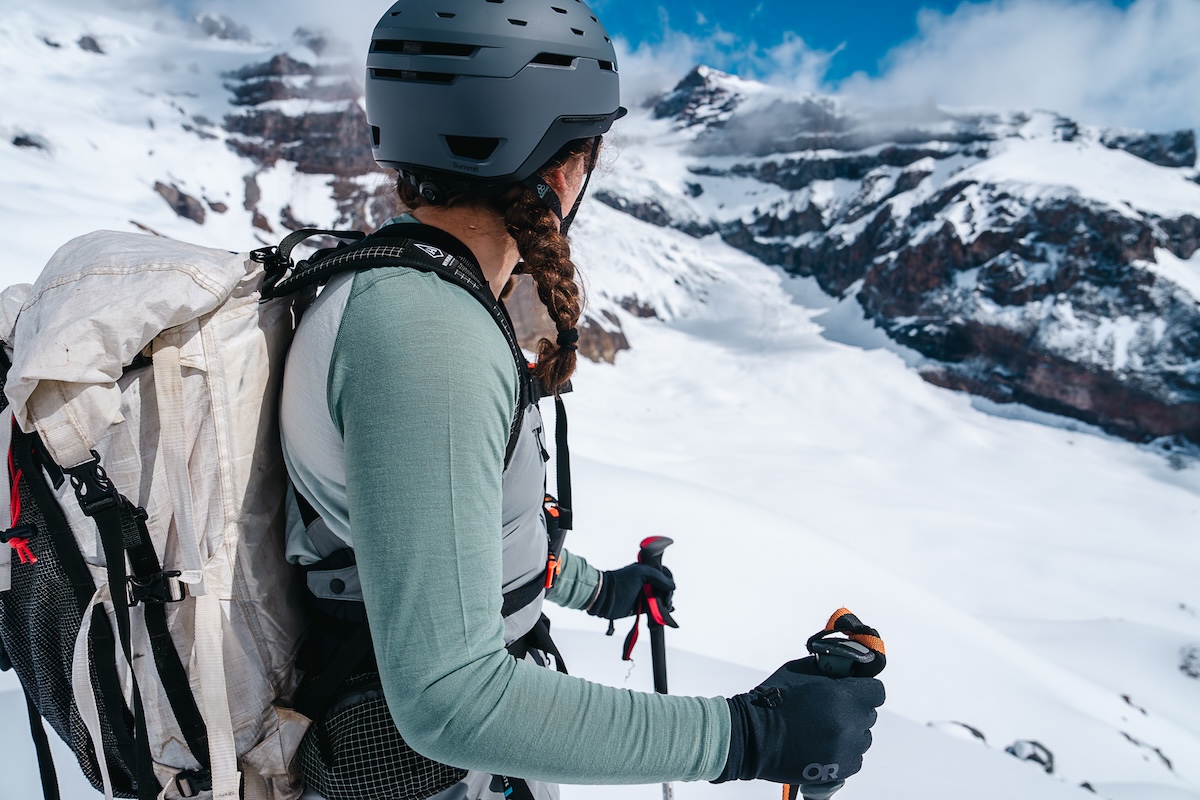

As your next-to-skin article of clothing, a baselayer plays a fundamental role in pulling moisture away from the body and regulating core temperature. It’s far easier to justify purchasing a nice down jacket, but a baselayer can be just as important for activities like skiing, hiking, and climbing. To start, avoid cotton (like the old adage “cotton kills”). You’ll need a fabric that will keep you warm when wet and dry out quickly, with merino wool and polyester being the most common choices. We've tested dozens of baselayers on stormy spring ski tours in the Pacific Northwest, frigid winter runs, and backpacking trips across the world, and below are our top 15 picks of 2025. For more information, see our comparison tables and buying advice below the picks, along with details about our testing process. Of note: This article covers options for both men and women, and we've also written dedicated round-ups of the best men's baselayers and best women’s baselayers.
Editor’s note: We updated this guide on September 9, 2025, to move the Ridge Merino Aspect Midweight Quarter Zip baselayer up as our favorite budget merino pick. We also swapped Ibex's Woolies Tech Long Sleeve Crew out for their Woolies Pro Tech Crew, which features NuYarn's weaving technique for added durability and thermal regulation. Lastly, we swept the guide to ensure all other information was up to date at the time of publishing and refreshed some photos with recent images from testing.
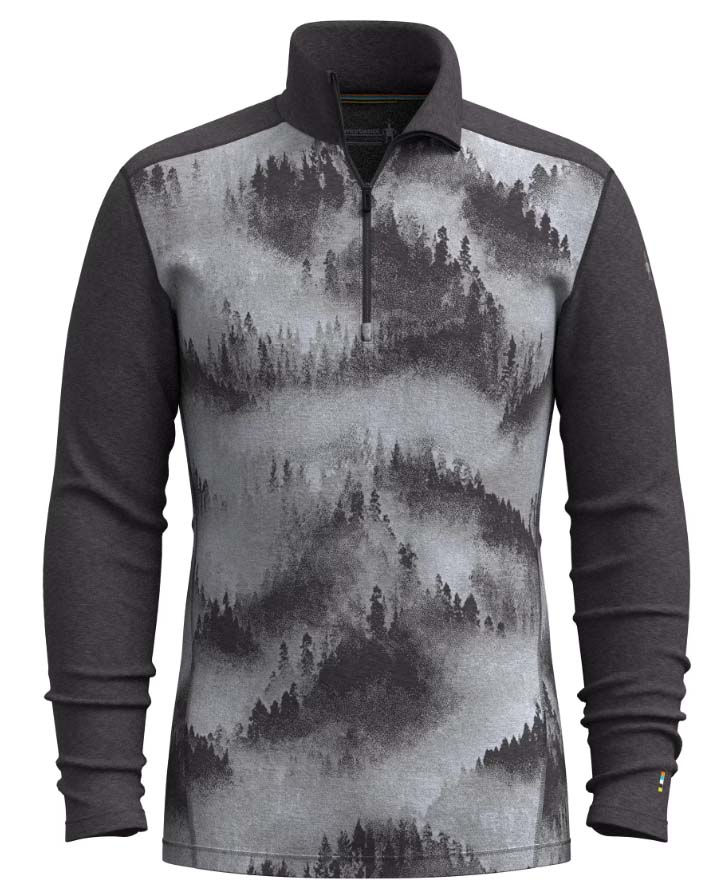 Material: 100% merino wool
Material: 100% merino wool
Category: Midweight
Fabric weight: 250g/m²
What we like: Very cozy and odor-resistant; crosses over well for casual use.
What we don’t: Expensive and overbuilt for high-output activities.
Denver-based Smartwool is a class leader in all things merino, and their Classic Thermal 1/4 Zip is our favorite baselayer from their competitive lineup. There are a host of benefits to going with merino over synthetic baselayers, including its unparalleled next-to-skin comfort, excellent weight-to-warmth ratio, and impressive odor-fighting abilities. The Classic Thermal checks all those boxes emphatically with a healthy dose (250g/m²) of merino wool that’s well suited for cold endeavors like resort skiing and mid-winter hikes. It’s cozy enough that we frequently wear it around the house, too. And if you find yourself overheating, the 8-inch zipper at the top makes it easy to regulate temperature. If you’re not a fan of the quarter-zip design, the Classic Thermal also comes in Crew and Hoodie variations, so you can choose the style that suits you best.
If you’re on a tight budget, you may want to consider a synthetic (or synthetic/wool blend) baselayer over a pure merino offering like the Smartwool Classic Thermal. In addition to being considerably pricier than most synthetic alternatives, merino isn’t as durable, breathable, or effective at wicking sweat. We think those trade-offs are worth it for the advantages in comfort and warmth (hence our ranking), but a final decision will come down to your priorities and objectives. Finally, it’s worth noting that the women’s Classic Thermal has a snugger fit than the men’s version, but we’ve had no complaints regarding freedom of movement with either style. In an increasingly competitive field of merino options, Smartwool continues to dominate.
See the Men's Smartwool Classic Thermal See the Women's Smartwool Classic Thermal
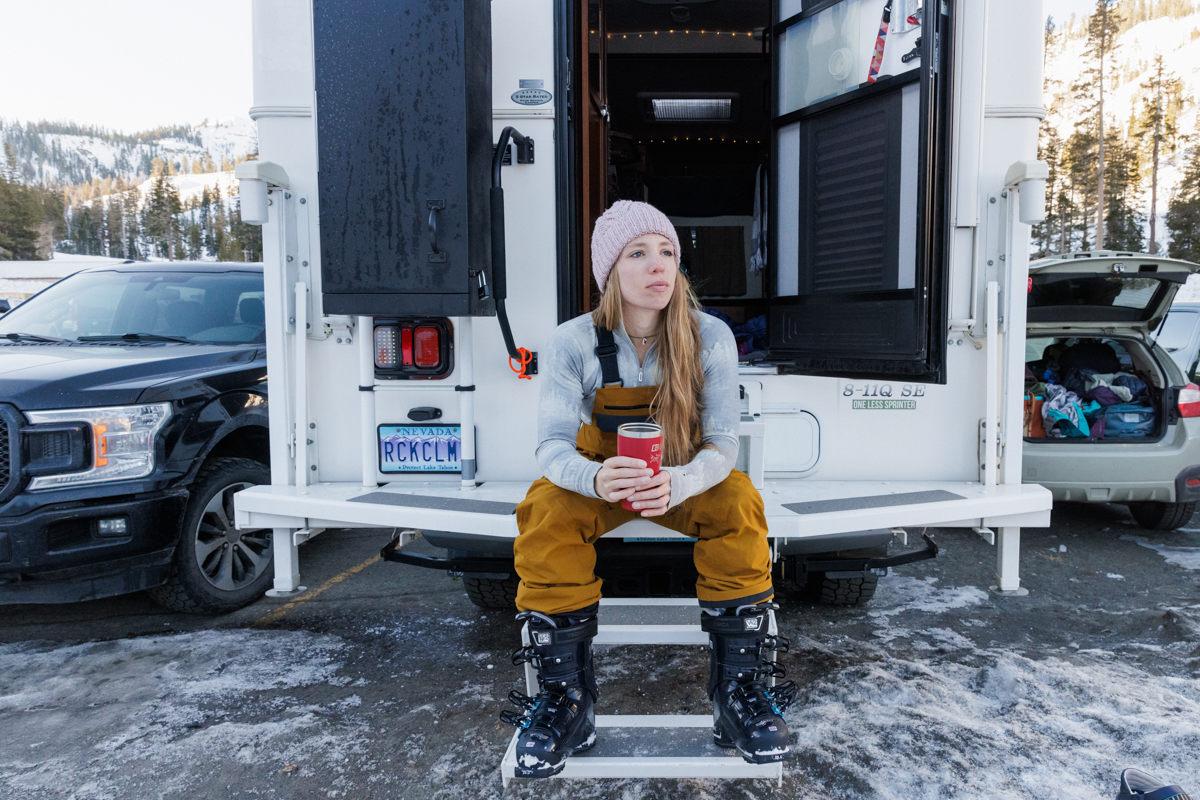
 Material: 100% polyester
Material: 100% polyester
Category: Light/midweight
Fabric weight: 147g/m²
What we like: Breathable, durable, and affordably priced.
What we don’t: Not as soft or adept at fending off odor as merino wool offerings.
As we touched on above, synthetic baselayers—especially those made from polyester—are typically cheaper, more breathable, and longer-lasting than merino offerings. We’ve tested a lot of designs over the years, and Patagonia’s Capilene Midweight Crewneck continually rises to the top of the pack. From backcountry ski tours to backpacking trips and climbing adventures all over the world, the Capilene has impressed us with its ability to keep us warm and dry during active pursuits. It’s also more comfortable than many synthetic competitors (although it’s a step down in next-to-skin softness compared to the Smartwool above), and we like that Patagonia paid attention to the smaller details like the low-profile thumb loops and underarm gussets for maximizing range of motion.
Again, there are some inherent trade-offs in opting for a synthetic baselayer like the Capilene Midweight, with the two biggest being comfort and odor resistance. To be fair, Patagonia’s anti-odor HeiQ Fresh treatment does a pretty good job fending off stink, but the Capilene will still require more frequent laundering than a merino alternative like the Classic Thermal above. We also came away with a couple fit-related complaints in testing: The 100%-polyester construction doesn’t have much “give,” and our testers reported slight restriction around the waist and chest, along with short sleeves. But if it fits, there’s no denying the Capilene’s excellent balance of warmth, breathability, and price, earning it a spot high on our list this season.
See the Men's Patagonia Capilene Midweight See the Women's Patagonia Capilene Midweight

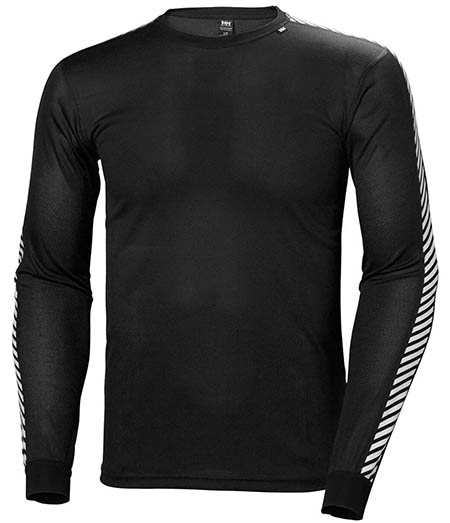 Material: 100% polypropylene
Material: 100% polypropylene
Category: Lightweight
Fabric weight: 125g/m²
What we like: An affordable baselayer built for moving fast in mild temperatures.
What we don’t: Can't keep up in truly cold conditions; we have concerns about long-term durability.
We generally turn to synthetic baselayers or wool/synthetic blends for heart-pumping activities when we’re likely to generate a sweat, and there are a lot of quality options available that won’t break the bank. Helly Hansen’s Lifa Stripe Crew is a case in point: This affordable layer is right at home on spring ski tours with a thin polypropylene construction that’s lightweight, highly breathable, and wicks sweat to an impressive degree (it does so much better than polyester). It’s also soft to the touch, slides smoothly underneath midlayers, and blocks wind quite well—enough so that it can function as a standalone piece in the right conditions (read: sunny and mild).
The biggest downside to going with a lightweight baselayer like the Lifa Stripe Crew is that it falls short in true winter conditions. For reference, polyester and merino trap warmth much more effectively than the Lifa’s polypro fabric, limiting its overall appeal. For a small bump in warmth, REI’s Lightweight Long-Sleeve Crew costs less and uses 150g/m² polyester, although the Lifa Stripe wins out in next-to-skin comfort and wicks sweat more effectively. As with most budget designs, we did experience some durability issues with the Lifa Stripe, including the stitching around the cuffs unraveling after just a few wears, and not everyone will love the flashy stripes on the sleeves. But if you set reasonable expectations, the Helly Hansen handily outperforms its price tag.
See the Men's Helly Hansen Lifa Stripe Crew
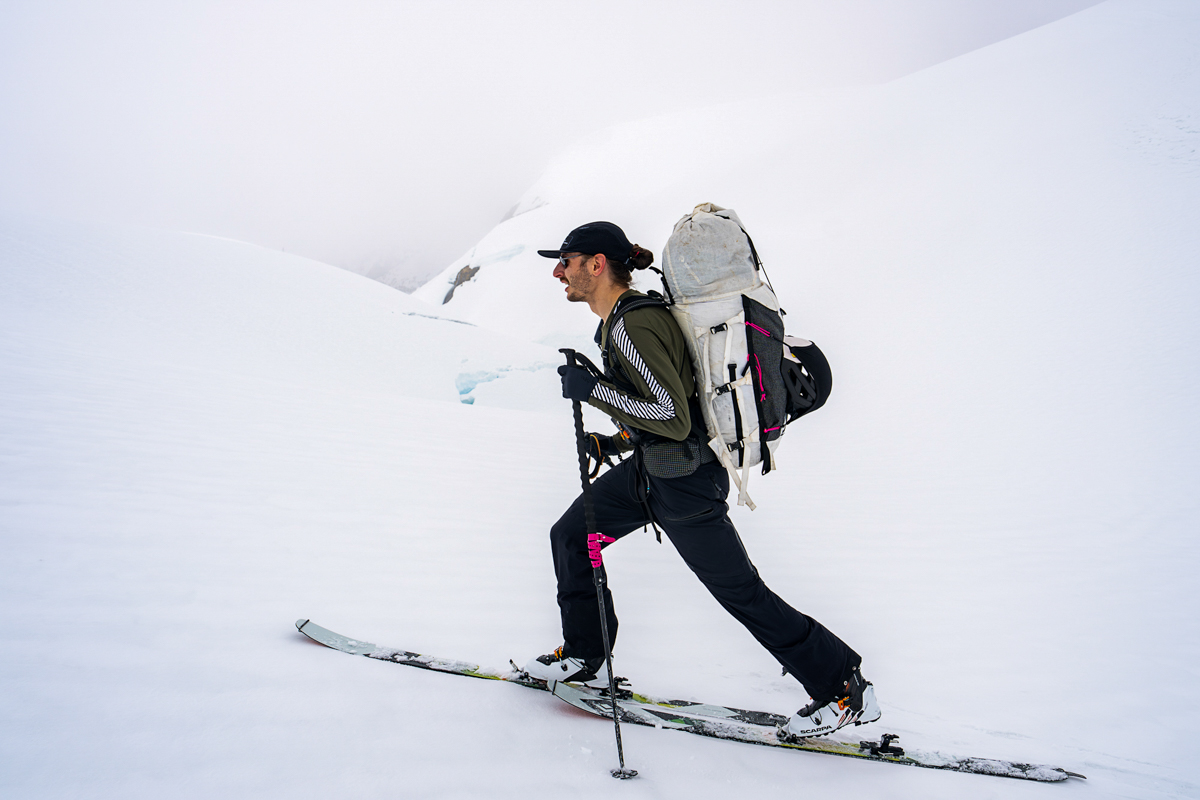
 Materials: 92% polyester, 8% spandex
Materials: 92% polyester, 8% spandex
Category: Midweight
Fabric weight: 220g/m²
What we like: A comfortable and flattering baselayer at a great price.
What we don’t: Not the best option for active pursuits; prone to holding onto stink.
REI Co-op is known for their affordably priced yet well-built apparel, and the Midweight Long-Sleeve Base Layer Top is no exception. This midweight baselayer provides adequate warmth on chilly hikes and resort days, and its simple but attractive styling makes it well-suited for wearing casually, too. We’ve also found it supremely comfortable—our tester claims it’s even softer than Patagonia’s pricier Capilene Midweight above—with its flat seams, athletic fit, and nice dose of spandex (8%) for added stretch and mobility. Plus, it regulates temperature and wicks sweat more effectively than anticipated for the price. A final feather in the REI Midweight’s cap is its healthy selection of sizes (from XS to 3X for women) and colorway options, along with availability in a half-zip variation.
However, keep in mind that the REI Midweight is more prone to holding onto body odor than merino alternatives and many synthetic competitors, including Patagonia’s Capilene above. Even after several washes, our shirt has retained a faint but unmistakable underarm stink. Further, while the polyester/spandex blend is comfortably silky, it’s a step down in next-to-skin softness compared to the merino options in this list, and its midweight construction is overkill on sunny spring days. Still, we think the REI Midweight strikes a hard-to-beat balance between price and performance, and it doesn’t hurt that it has withstood many accidental cycles in our dryer (REI recommends tumble-drying on low heat).
See the Women's REI Midweight Long-Sleeve
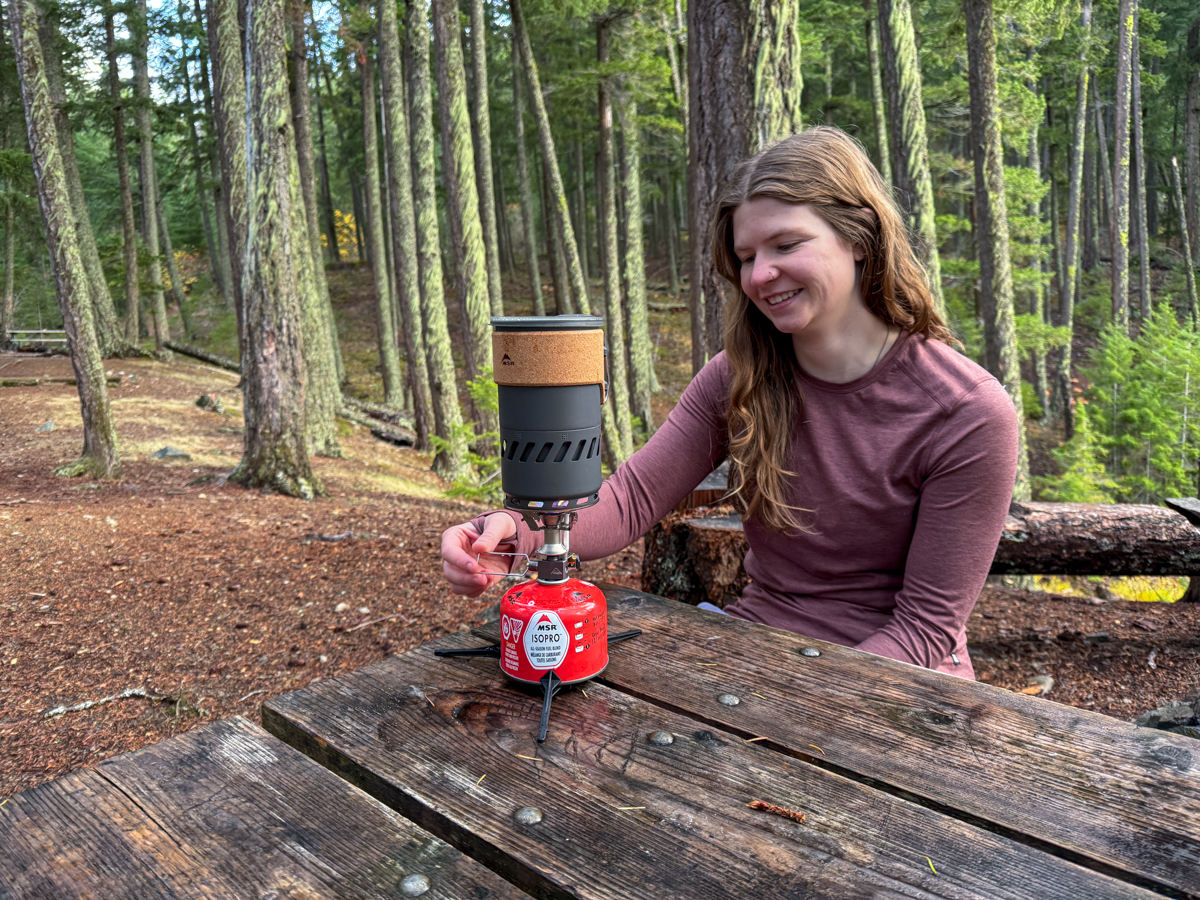
 Materials: 84% merino wool, 16% nylon
Materials: 84% merino wool, 16% nylon
Category: Midweight
Fabric weight: 180g/m²
What we like: Well priced for what you get, including a high-quality merino blend and nice suite of performance features.
What we don’t: No mesh panels for ventilation; only offered in a few subdued colorways.
Ridge Merino is a relatively small operation out of eastern California, focusing their efforts on well-built but affordable wool baselayers. The Aspect Midweight Quarter Zip is one of our favorite pieces in their collection: With a midweight construction (180g/m²) and a touch of nylon (16%), the Aspect boasts all the comfort and performance benefits of merino with a slight boost in durability compared to all-wool designs like the top-ranked Smartwool Classic Thermal above. In fact, it’s so soft and cozy that we can frequently be found wearing it around the house. The cherry on top is the price tag, which significantly undercuts most merino-heavy options on the market.
Aside from the quarter-length zipper for regulating temperature, you don’t get much in the way of ventilation, which can be limiting for uses like cross-country skiing or winter running. But all of the other requisite features are there, including well-designed thumb loops that disappear into the cuffs, flatlock seams for a streamlined appearance and comfort underneath pack straps, and a long cut that doesn’t ride up. Plus, we appreciate that Ridge offers the design in several styles, including a sleeker crew top and a women’s-specific turtleneck version that we’ve come to love. No matter which variation you choose, the Aspect stands out as one of our favorite designs on the market for mild conditions or high-intensity activities in colder temperatures—at a very solid value to boot. Note: Availability for the men’s version is limited at the time of publishing, but we expect stock to improve in the coming months.
See the Men's Aspect Midweight Quarter Zip See the Women's Aspect Midweight Quarter Zip
 Materials: 53% merino wool, 45% polyester, 2% elastane
Materials: 53% merino wool, 45% polyester, 2% elastane
Category: Midweight
Fabric weight: 250g/m²
What we like: Purpose-built for high-output pursuits like cross-country skiing and backcountry touring.
What we don’t: On the pricier end and not particularly versatile.
While Smartwool’s Classic Thermal above is our favorite layer for cold-weather pursuits like resort skiing, their Intraknit Thermal here is the more purpose-built option for sweat-inducing activities like cross-country skiing or backcountry touring in cool to cold conditions. The healthy dose of polyester (45%), along with the addition of mesh ventilation zones in heat-prone areas like the upper back and core, results in a significant boost in both breathability and durability. And importantly, you still get all the benefits of merino, including solid odor resistance and a soft next-to-skin feel. Taken together, the Intraknit Thermal is the complete package for heart-pumping activities from Nordic skiing to breaking trail in waist-deep powder.
The Intraknit Thermal has a snug fit, which is great for performance use but detracts from all-around versatility—for around-town wear, we’d go with a looser-fitting design like the Patagonia Capilene or REI Midweight above. On the flip side, those looking to maximize warmth for more casual activities may want to consider an all-merino option like the Classic Thermal instead (at the sacrifice of breathability and durability). Finally, the Intraknit doesn’t come cheap, although performance lines up well with the price. If you like to stay active in the winter and need a baselayer that will keep up, the Intraknit Thermal is hard to beat. It’s also sold in a thinner variation called the Intraknit Active, which is better suited for mild conditions.
Read more: Smartwool Intraknit Thermal review (women's version)
See the Men's Smartwool Intraknit Thermal See the Women's Smartwool Intraknit Thermal

 Materials: 53% polyester, 38% nylon, 9% elastane
Materials: 53% polyester, 38% nylon, 9% elastane
Category: Heavyweight
Fabric weight: 241g/m²
What we like: A warm and cozy synthetic baselayer that can pull double duty as a midlayer.
What we don’t: The most expensive option here and overbuilt for mild conditions.
While Smartwool consistently takes the cake for premium merino layers, there’s no denying Arc’teryx’s reputation for well-designed and high-performing outdoor apparel. Their synthetic Rho series is among our favorites, and the Heavyweight Zip Neck model is tailor-made for regulating body temperature in cold weather, whether you’re moving or standing still. This is largely due to the fleecy Polartec Power Stretch Pro fabric, which is adept at both trapping warmth and wicking moisture (i.e., sweat) away from your body. It also holds its shape over time and nicely fends off odor. Rounding out the design, the Rho Heavyweight features a flattering, trim fit that’s easy to move in and layer underneath a puffy or shell, along with a low-profile chest pocket for stashing keys or a gel (it’s too small for a smartphone).
Due to its thick construction, the Rho Heavyweight lands in between our baselayer and midlayer categories—we’ve worn it as a standalone piece just as often as we have next-to-skin. If you’re looking for something lighter for heart-pumping objectives or mild weather, we recommend taking a look at the Rho LT collection, which features several styles for both men and women. Regardless of which option you choose, expect to pay a bit of a premium for the Arc’teryx name. But as the saying goes, you get what you pay for, and in this case, it’s top-notch quality and a well-tailored fit and finish. Note: At the time of publishing, the Rho Heavyweight is tough to find online, but we expect availability to improve this fall.
See the Men's Rho Heavyweight Zip Neck
 Material: 100% merino wool
Material: 100% merino wool
Category: Heavyweight
Fabric weight: 240g/m²
What we like: Remarkably cozy and warm with attractive styling.
What we don’t: Overkill for mild days and working hard, pricey, and has a snugger fit than the Classic Thermal above.
Norwegian Olympic skier Kari Traa founded her namesake company in 2002 with the purpose of designing high-quality ski apparel for women. Their lineup is decidedly feminine with eye-catching colorways and flattering silhouettes that avoid the “shrink it and pink it” strategies of old. And importantly, their pieces don’t just look great—we’ve been consistently impressed by all-around performance, too. The Rose Half Zip has become a staple in our winter wardrobe, serving as our resort skiing baselayer for the past two seasons. Like the Smartwool Classic Thermal above, it’s made with 100% merino wool, which translates to excellent temperature regulation, odor control, and next-to-skin comfort. And we’re big fans of the Rose's styling: The snowflake patterning and solid side panels give it a very refined, classy look that wears just as well après as it does on the slopes.
Despite Kari Traa's "midweight" designation, the Rose is a good deal thicker and warmer than the Smartwool Classic Thermal above (we consider it a heavyweight design). The fit is also noticeably snugger, meaning you may want to size up depending on your intended use. And both pieces are too warm for heart-pumping activities like ski touring—we’ve even grown close to overheating in the Kari Traa on short bootpacks to access hike-to terrain in the heart of winter. For a step down in warmth, we also like Rose Light Half Zip, which features a slightly thinner (230g/m²) construction and underarm panels for ventilation.
See the Women's Kari Traa Rose Half Zip
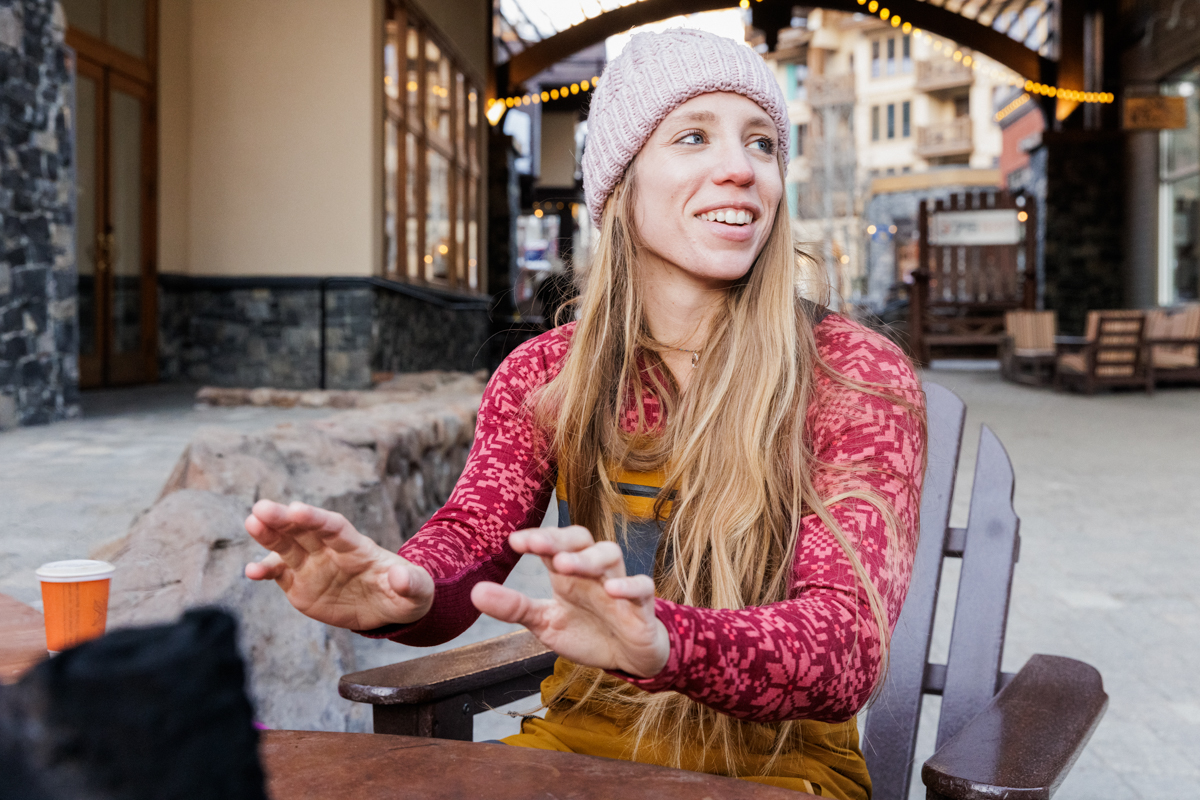
 Materials: 93% polyester, 7% spandex
Materials: 93% polyester, 7% spandex
Category: Midweight
Fabric weight: 197g/m²
What we like: The most durable baselayer on our list.
What we don’t: Expensive for a synthetic design and tough to layer overtop.
As the term implies, baselayers are typically designed to be worn next-to-skin, but NW Alpine’s Black Spider Hoody is durable enough to work as a standalone piece, too. The tightly woven Polartec Power Grid fabric is impressively resistant to tears and abrasion, and the light dose of spandex (7%) helps maximize mobility—great characteristics for activities like rock and ice climbing. The rest of the feature set lines up equally well for performance use, including a long cut that stays put underneath a hipbelt or climbing harness, a low-profile hood that fits under a helmet, a small chest pocket, thumb loops, and a quarter-length front zipper for regulating temperature.
Compared to most baselayers, the NW Alpine Black Spider Hoody has a roomier fit that makes it easy to layer underneath but results in added bulk. In other words, it’s likely you’ll be layering underneath rather than overtop the Black Spider most of the time. It’s also noticeably less soft than merino offerings and falls short in odor resistance while costing just as much (or more) than many wool alternatives. A final clincher is that the Black Spider Hoody can be tough to track down at certain times of the year (stock is dwindling at the time of publishing). Gripes aside, our Black Spider has withstood more than eight years of climbing abuse—much of the time without a jacket overtop—which is undeniably impressive.
See the Men's NW Alpine Black Spider See the Women's NW Alpine Black Spider

 Materials: 88% merino wool, 12% nylon
Materials: 88% merino wool, 12% nylon
Category: Lightweight
Fabric weight: 150g/m²
What we like: The most affordable Smartwool option here; comfortable and breathable.
What we don’t: Still quite expensive and susceptible to wear and tear.
While the Classic Thermal and Intraknit Thermal above have a lot going for them, we’d be remiss not to also include Smartwool's Classic All-Season, which is arguably the most versatile of the bunch. In terms of construction, the Classic All-Season is noticeably thinner than both of the Thermal options, translating to a noticeable boost in breathability. It also incorporates a healthy dose of nylon for improved durability while upping the merino content compared to the Intraknit. The net result: A lightweight and moisture-wicking top that’s great for uses like spring skiing, shoulder-season hiking, and cool summer nights. Its simple, streamlined appearance and classy colorway selection make it attractive for wearing casually, too.
Despite the addition of nylon, the Classic All-Season’s lightweight construction makes it susceptible to early breakdown, especially around high-wear areas like the cuffs and shoulders. You can help maximize its lifespan by following Smartwool’s care instructions (don’t regularly throw it in the dryer, for instance), but this is a largely unavoidable pitfall of thin merino offerings. Otherwise, we have little to fault with the Classic All-Season: It’s another quality piece from Smartwool with a very enticing combination of comfort and breathability—great for everything from demanding winter activities like cold-weather running to more casual outings in milder temperatures.
See the Men's Smartwool Classic All-Season See the Women's Smartwool Classic All-Season
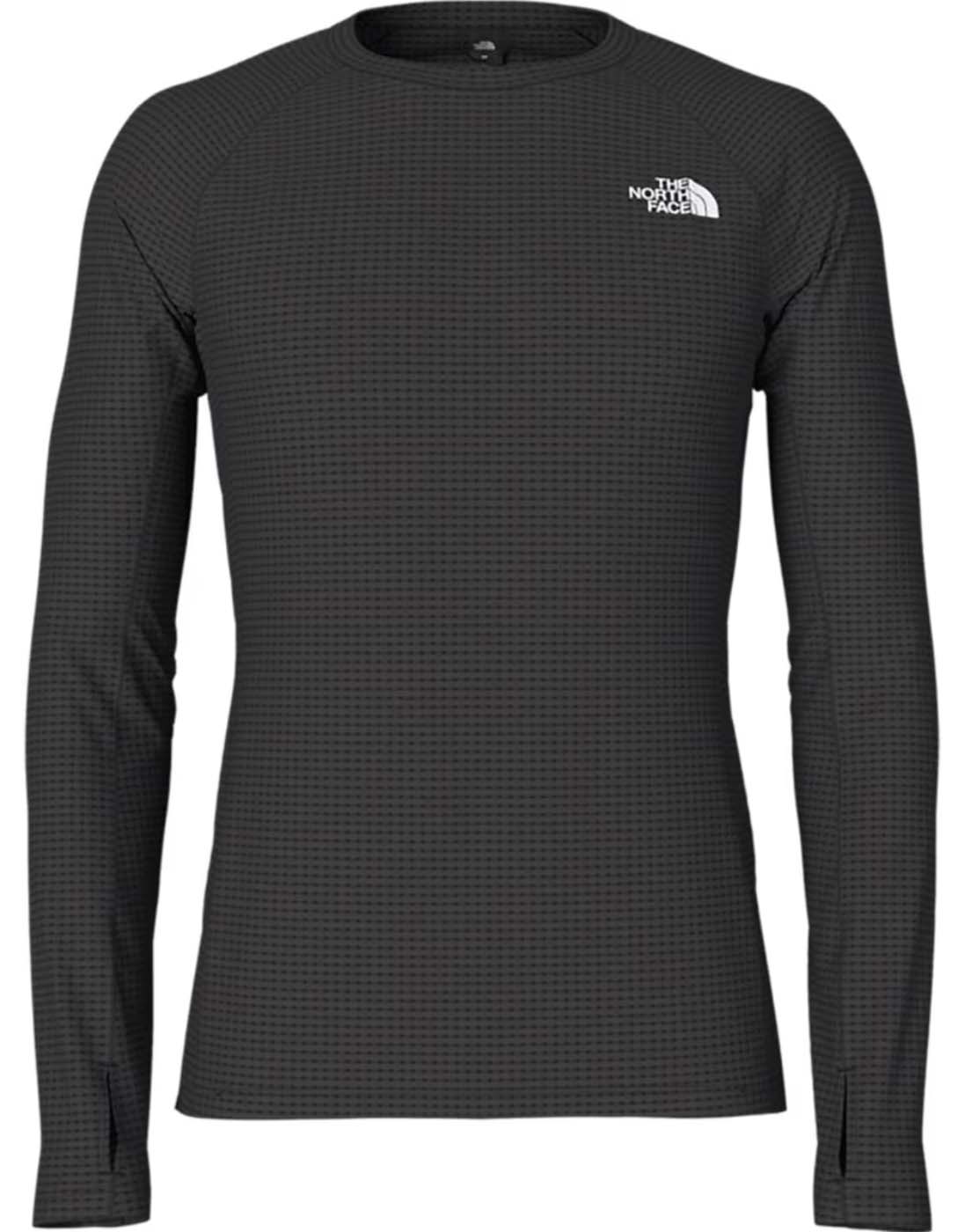 Material: 100% polyester
Material: 100% polyester
Category: Lightweight
Fabric weight: 132g/m²
What we like: DotKnit fabric expertly balances warmth and temperature regulation.
What we don’t: Limited casual appeal; you can save a lot with the similarly intentioned Lifa Stripe Crew above.
The Smartwool Intraknit Thermal above is our favorite baselayer for high-output use in cool to cold conditions, but it’s overbuilt for exerting in mild temperatures. Enter The North Face’s Summit Series Pro 120 Crew, which swaps in a thinner (132g/m²) construction that makes it better suited for shoulder-season activities like fall trail running and spring skiing. The headlining feature of this 100%-polyester design is its DotKnit fabric, which is patterned with small holes that help improve airflow while still trapping a good amount of warmth. In testing, we’ve been very impressed by the Summit Series Pro’s ability to effectively dump heat and manage moisture during intensive activity, and the trim fit is a boon for performance use.
Despite its thin synthetic construction, the Summit Series Pro 120 Crew has an excellent next-to-skin feel, and it’s only collected a couple of snags after a year of consistent use. The styling isn’t anything to write home about—it’s only sold in a single black colorway, and the TNF logo is pretty prominent on the chest and back of the shoulder—but we have little to complain about from a performance perspective. All told, if you’re looking for a lightweight, technically savvy baselayer for exerting in the spring and fall, the Summit Series Pro 120 gets our ringing endorsement.
See the Men's TNF Summit Series Pro 120 See the Women's TNF Summit Series Pro 120
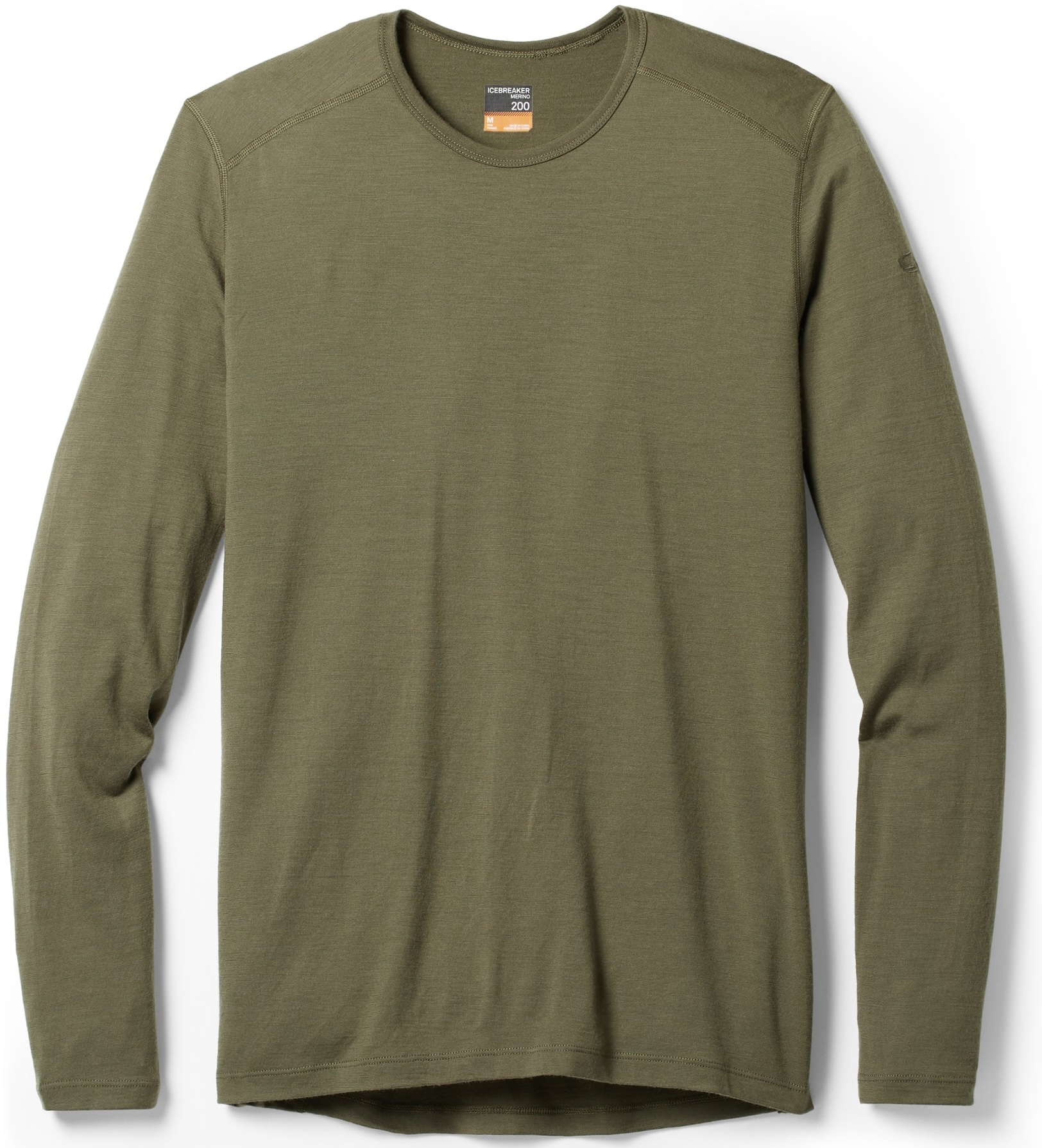 Material: 100% merino wool
Material: 100% merino wool
Category: Midweight
Fabric weight: 200g/m²
What we like: A very comfortable all-merino baselayer made with ethically sourced wool.
What we don’t: Not a standout value; doesn't dump heat as effectively as the thicker Classic Thermal above.
With so much merino sourced from New Zealand flocks, it makes sense that a New Zealand-based brand like Icebreaker would rank competitively in the baselayer market. We’ve tested a lot of their designs over the years and particularly like the Merino 200 Oasis Crew, which is made from 100% merino wool, has a super soft feel, and features a performance fit that works well for everything from skiing to cool-weather hiking. We also appreciate that Icebreaker is transparent about their wool sourcing, working closely with local farmers who prioritize the health and well-being of their sheep. Both aesthetically and ethically, it’s easy to feel good wearing the Merino 200 Oasis Crew.
The Icebreaker Merino 200 Oasis Crew isn’t a standout value, but it does undercut Smartwool’s thicker Classic Thermal and Intraknit Thermal above. That said, we’ve found the Oasis prone to riding up around our waist, and it doesn’t dump heat as effectively as the Classic Thermal despite its thinner fabric (the lack of a front zipper doesn’t help). On the flip side, the Icebreaker wins out in next-to-skin softness, making it the better option for those who prioritize comfort above all else. And if you’re looking to level up in terms of warmth, consider Icebreaker’s 260 Tech, a thicker version of the Oasis here.
See the Men's Icebreaker 200 Oasis See the Women's Icebreaker 200 Oasis
 Material: 100% polyester
Material: 100% polyester
Category: Lightweight
What we like: Free-flowing and highly breathable fabric with the added assurance of UPF protection.
What we don’t: Not a standout in durability, and prone to odor buildup.
For a free-flowing synthetic that can be worn year-round, we turn to Outdoor Research’s lightweight Echo. Offered in a number of different styles, the hoody here stands out for its versatility: Wear it as a breathable baselayer on high-output spring ski tours, as a winter running shirt, or as a sun hoody on bluebird climbing days. We don’t feature many hooded designs on our list since multiple hoods can lead to unruly bunching, but the Echo’s low-profile design provides a nice boost in above-the-neck coverage and protection with minimal bulk.
The Echo’s lightweight construction is highly breathable but susceptible to pilling and snags. It also lacks the soft next-to-skin feel of many of the merino offerings above. And despite Outdoor Research’s use of ActiveFresh Odor Control, the Echo is known to hold onto stink. Finally, while we appreciate the addition of UPF sun protection, the Echo has a lower rating than most sun shirts (15 to 20, depending on color). But in terms of moisture management, the Echo does a great job keeping us comfortable, making it a go-to baselayer for mild conditions or high-output use in any season. And we like that the women’s version features a hole in the hood, which worked nicely for keeping our female tester’s ponytail off her sweaty neck.
See the Men's OR Echo Hoodie See the Women's OR Echo Hoodie
 Material: 84% polyester, 16% elastane
Material: 84% polyester, 16% elastane
Category: Midweight
Fabric weight: 190g/m²
What we like: A soft, flattering, and durable women's baselayer for exerting in cold weather.
What we don’t: The priciest synthetic option on our list.
The Rho Heavyweight above is one of our favorite heavyweight designs, but the women’s Rho Crew Neck LS offers similar appeal in a lighter-weight package. In testing, we found the 190g/m² Torrent microfleece fabric to be impressively soft and effective at regulating temperature—both when we were moving and standing still. It also maintains its shape after multiple washings, fends off odor impressively well (for a synthetic design, that is), and features a cozy brushed liner for excellent comfort and moisture management. And we truly love the fit, which strikes a just-right balance for both performance use and wearing casually—we’ve received compliments when wearing it around town on more than one occasion.
Arc’teryx gear rarely comes cheap, and the Rho Crew Neck LS isn’t a particularly strong value considering the lack of merino wool. For reference, this makes it the priciest synthetic option on our list, although we have little to complain about from a quality standpoint. All in all, the Rho pulls off a non-merino build better than most, making it a great pairing for everything from winter road running and Nordic skiing to grabbing a beer at the lodge after a long ski day. It’s also sold in a Zip Neck version, which comes with advantages in ventilation—zip the tall collar up for extra protection or unzip it for additional airflow.
See the Women's Arc’teryx Rho Crew Neck LS
 Materials: 85% merino wool, 15% nylon
Materials: 85% merino wool, 15% nylon
Category: Light/midweight
Fabric weight: 125g/m²
What we like: Another great merino option from a reputable wool manufacturer.
What we don’t: One of the more expensive baselayers here despite less features.
Last but certainly not least is Ibex’s Woolies Tech Pro Crew. Like Ridge Merino above, Ibex is a small-time operation dedicated to designing high-quality layers, and the Woolies Tech collection nicely showcases their expertise. Similar to the Aspect Midweight above, the Woolies Tech is constructed with a blend of merino and nylon, but the NuYarn weaving technique boosts thermal efficiency and durability over traditional methods. The result is a comfortable and odor-resistant baselayer that effectively manages moisture while holding up better over the long term than most all-wool alternatives. And while pretty basic in terms of design, we like the Ibex’s classy styling and flattering fit that wears well both outdoors and around town.
The lack of value is the biggest drawback: The Woolies Tech is pricier than alternatives like the aforementioned Ridge Aspect and even comes close to the top-ranked Smartwool Classic Thermal, which features a thicker construction and a quarter-length zipper for dumping excess heat. And keep in mind that Ibex layers can be a little tricky to track down—like Ridge Merino, Ibex sells primarily through their website, which means you won’t have the option to try on before you buy. Gripes aside, Ibex holds its own in an increasingly competitive space, and we appreciate their transparency surrounding their supply chain.
See the Men's Ibex Woolies Pro Tech Crew
| Baselayer | Price | Materials | Category | g/m² | Weight |
|---|---|---|---|---|---|
| Smartwool Classic Thermal | $120 | 100% merino wool | Midweight | 250 | 10.5 oz. |
| Patagonia Capilene Midweight | $89 | 100% polyester | Light/mid | 147 | 6.2 oz. |
| Helly Hansen Lifa Stripe Crew | $50 | 100% polypropylene | Lightweight | 125 | 4.2 oz. |
| Ridge Merino Aspect Midweight | $79 | 84% merino wool, 16% nylon | Midweight | 180 | 8.3 oz. |
| Smartwool Intraknit Thermal | $130 | 53% merino, 45% polyester, 2% elastane | Midweight | 250 | 7.3 oz. |
| Arc'teryx Rho Heavyweight | $140 | 53% polyester, 38% nylon, 9% elastane | Heavyweight | 241 | 10.1 oz. |
| NW Alpine Black Spider Hoody | $135 | 93% polyester, 7% spandex | Midweight | 197 | 11.0 oz. |
| Smartwool Classic All-Season | $90 | 88% merino wool, 12% nylon | Lightweight | 150 | 6.0 oz. |
| The North Face Summit Pro 120 | $90 | 100% polyester | Lightweight | 132 | 6.7 oz. |
| Icebreaker 200 Oasis Crew | $105 | 100% merino wool | Midweight | 200 | 7.6 oz. |
| Outdoor Research Echo Hoodie | $75 | 100% polyester | Lightweight | Unavail. | 5.3 oz. |
| Ibex Woolies Pro Tech Crew | $115 | 85% merino, 15% nylon | Light/mid | 123 | 8.11 oz. |
| Baselayer | Price | Materials | Category | g/m² | Weight |
|---|---|---|---|---|---|
| Smartwool Classic Thermal | $120 | 100% merino wool | Midweight | 250 | 8.3 oz. |
| Patagonia Capilene Midweight | $89 | 100% polyester | Light/mid | 147 | 5.4 oz. |
| REI Co-op Midweight LS | $55 | 92% polyester, 8% spandex | Midweight | 220 | 7.6 oz. |
| Ridge Merino Aspect Midweight | $79 | 84% merino wool, 16% nylon | Midweight | 180 | 7.1 oz. |
| Smartwool Intraknit Thermal | $130 | 53% merino, 45% polyester, 2% elastane | Midweight | 250 | 6.4 oz. |
| Kari Traa Rose Half Zip | $140 | 100% merino wool | Heavyweight | 240 | 7.5 oz. |
| NW Alpine Black Spider Hoody | $135 | 93% polyester, 7% spandex | Midweight | 197 | 10.0 oz. |
| Smartwool Classic All-Season | $90 | 88% merino wool, 12% nylon | Lightweight | 150 | 4.7 oz. |
| The North Face Summit Pro 120 | $90 | 100% polyester | Lightweight | 132 | 5.4 oz. |
| Icebreaker 200 Oasis Crew | $105 | 100% merino wool | Midweight | 200 | 6.5 oz. |
| Outdoor Research Echo Hoodie | $75 | 100% polyester | Lightweight | Unavail. | 3.9 oz. |
| Arc’teryx Rho Crew Neck LS | $100 | 84% polyester, 16% elastane | Midweight | 190 | 5.5 oz. |
The Switchback Travel team has tested dozens of baselayers over the years, from lightweight designs for summer hiking and backpacking to heavyweight models for frigid resort days. Former editor-in-chief John Ellings compiled this guide in 2015, hand-picking our initial lineup of eight baselayers based on his experiences on trails and ski slopes in the Pacific Northwest. The torch was later passed to editor Maddie Downie in 2024. Maddie can often be found ski touring in the North Cascades and climbing volcanoes in the spring months, both of which require strategic layering. Given her love of all things winter, Maddie has lots of experience dressing for all sorts of conditions.
In assembling our current lineup of 15 baselayers, we’ve taken into account our own experiences along with feedback from our testers and the larger online hiking and skiing communities. When we test baselayers, we evaluate warmth by pairing them with different layers overtop in varying conditions, gauge breathability by working up a sweat, and assess how long each layer resists stink before needing a wash. We also look for durability issues like pilling and snags, consider how each baselayer fits and feels on different body types (we’ve also compiled more focused guides on the best men's baselayers and best women’s baselayers), and inspect features like drawcords, zippers, and hoods for ease of use and functionality. Our picks change over time, and we will continue to test and incorporate new baselayers based on our experiences.
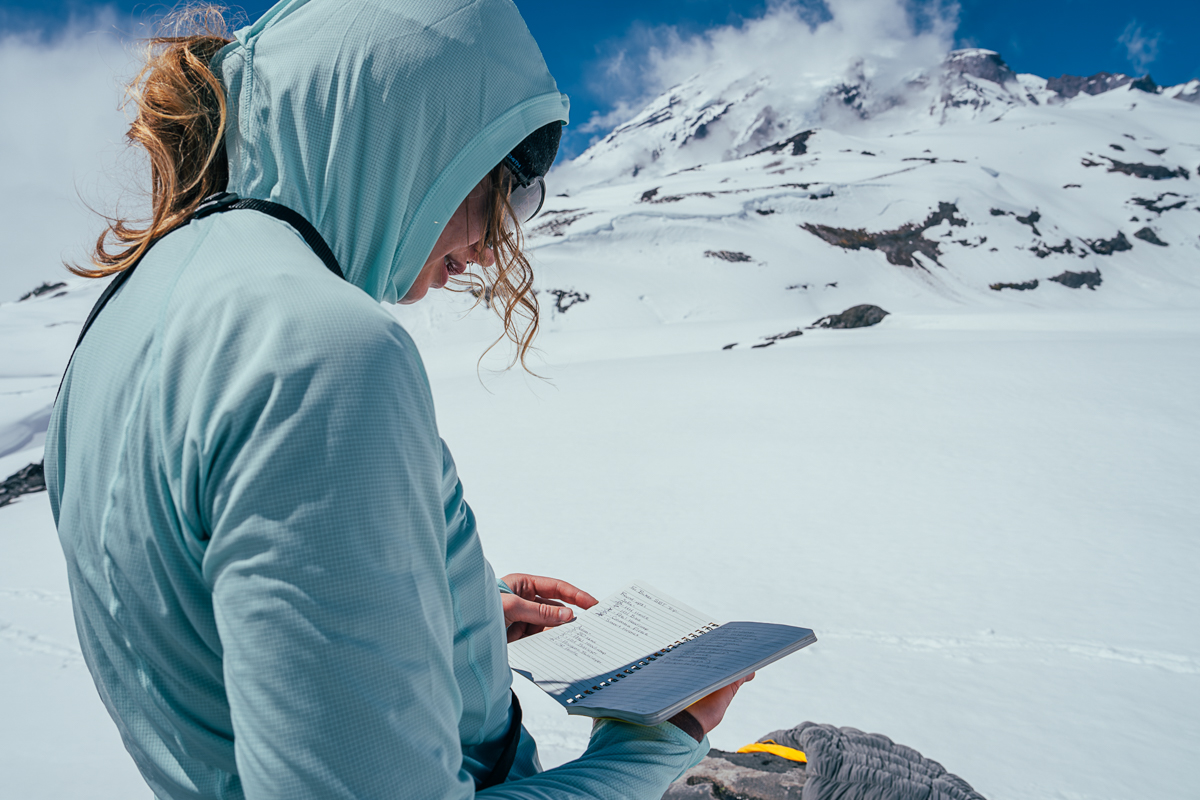
Merino Wool
Merino wool is our favorite baselayer material for chilly conditions: It’s soft, impressively warm relative to its weight, regulates temperature efficiently, and naturally combats odors far better than synthetic fabrics. If you’re after a snug, next-to-skin layer that won’t leave you feeling clammy, merino is an excellent option. However, merino wool isn’t as tough as synthetic materials, and it's often too warm for moderate temperatures or high-exertion activities like ski touring, running, or Nordic skiing. It also absorbs more sweat than synthetics—a characteristic that can lead to discomfort when you start to cool down. That said, for mellow outdoor outings or those who prioritize the feel of natural fibers, merino wool remains a compelling choice. For a deeper dive dive on the advantages and drawbacks, check out our article: Merino Wool: Is It Worth It?
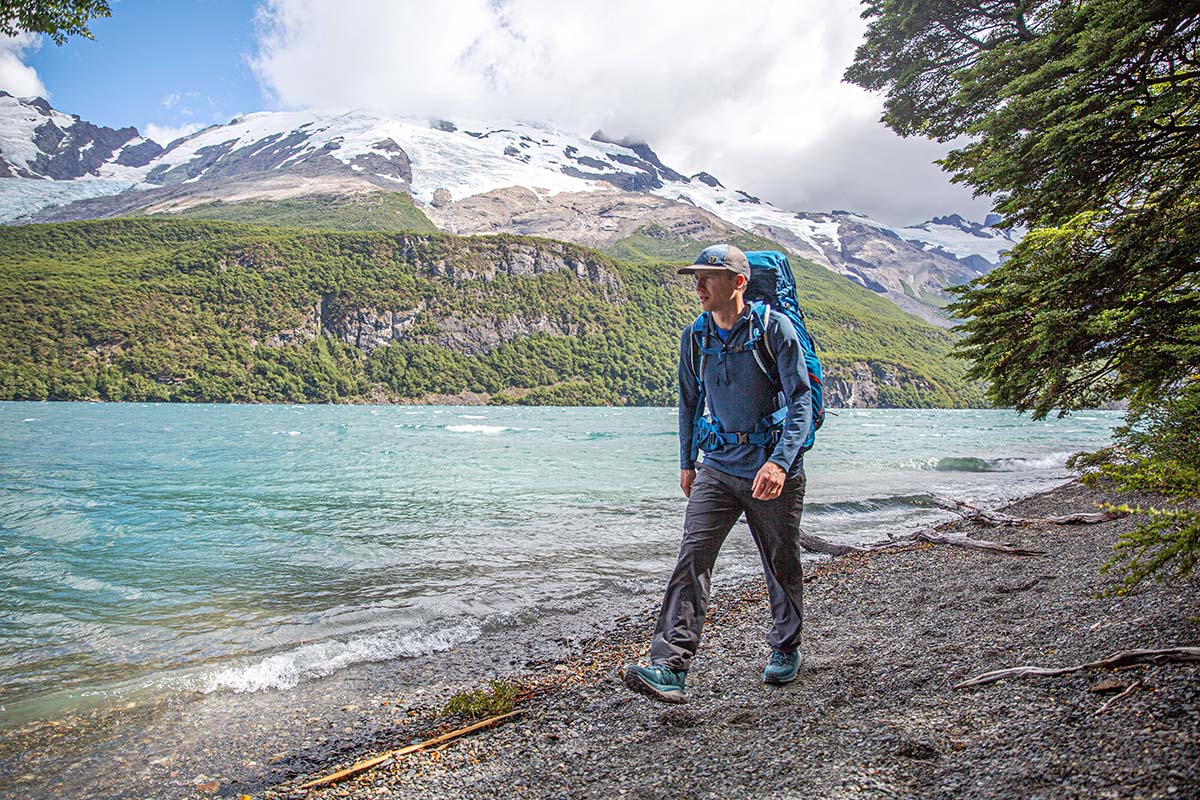
Synthetics
Fabrics like polyester and nylon offer a budget-friendly alternative to merino while excelling in moisture management and durability. For variable conditions, high-intensity pursuits, or when used as an outer layer, synthetics are our go-to pick. Their biggest shortcoming is odor retention: Despite manufacturers’ best efforts, polyester and nylon still fall short of merino’s natural odor resistance. Additionally, synthetic materials don’t insulate as efficiently for their weight, making them a less-than-ideal choice for frigid temperatures or low-activity days. It's worth mentioning that quality varies significantly: Premium options like the Arc'teryx Rho Heavyweight and The North Face Summit Series Pro 120 use top-tier polyester, while cheaper alternatives, such as Patagonia’s Capilene series, are more prone to pilling and wear.
Blends
Hybrid blends provide a balanced mix of merino’s comfort and odor resistance with the durability and moisture-wicking properties of synthetics. Many lightweight merino layers, like the Smartwool Classic All-Season (88% merino, 12% nylon), incorporate synthetic fibers purely for longevity, as ultralight merino (under 200g/m²) is prone to developing holes. On the flip side, some of the best baselayers for active pursuits, such as the Smartwool Intraknit Thermal Merino Crew, integrate synthetics for improved breathability and sweat-wicking. If comfort is the priority, we stick to 100% merino; if breathability is key, we prefer full synthetic. But for a versatile option, blends strike an excellent middle ground.
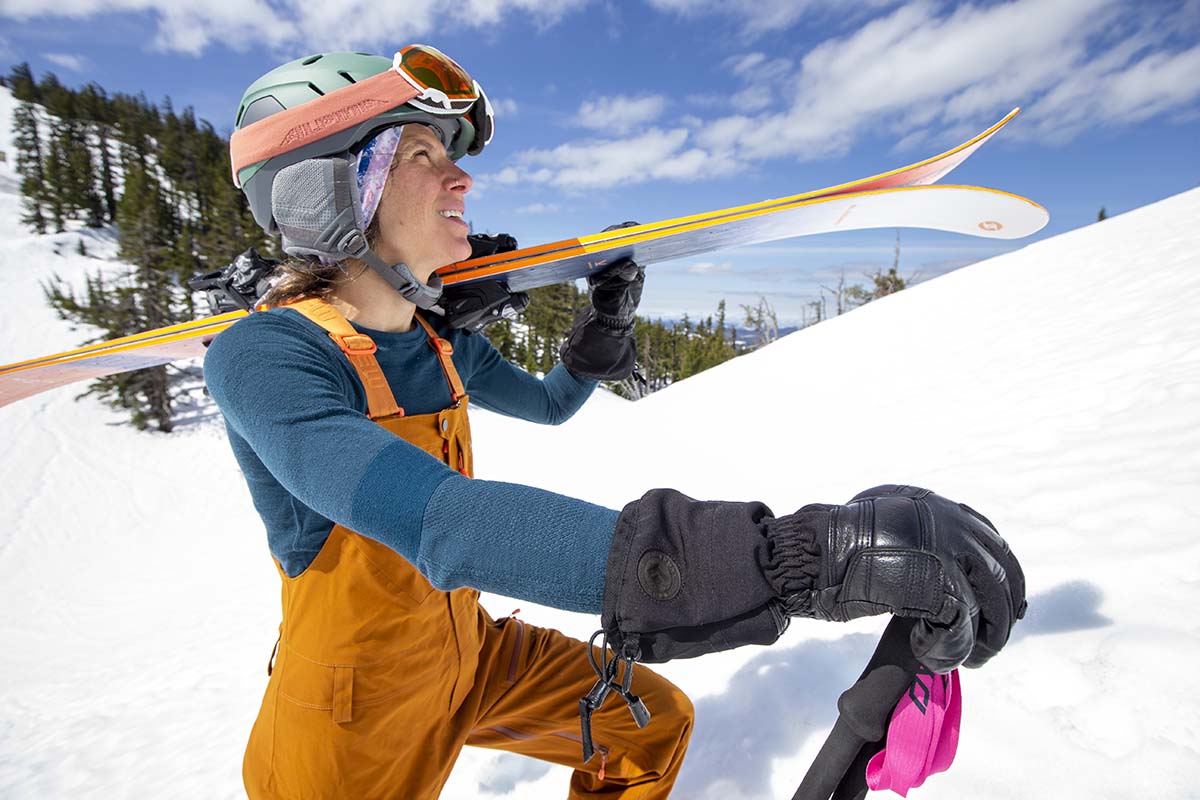
Breathability
A baselayer’s breathability depends on several factors, including fabric type, thickness, and weave structure. Generally, lightweight merino and synthetic options offer superior airflow compared to heavier-weight models. That said, synthetics are significantly more breathable than wool. While merino wicks moisture effectively, it also tends to retain it—something that can be problematic in cold conditions. A damp baselayer is never ideal, even if wool continues to insulate when wet. Additionally, merino tends to be too warm for high-intensity activities. For this reason, we favor synthetic baselayers like The North Face Summit Series Pro 120 or the lightweight Arc'teryx Rho when we expect to sweat (think ski touring, Nordic skiing, and running). Some blends also perform well in this regard, such as Smartwool’s Intraknit Thermal and Intraknit Active.
Polyester: Excellent
Blends: Very good
Merino: Good
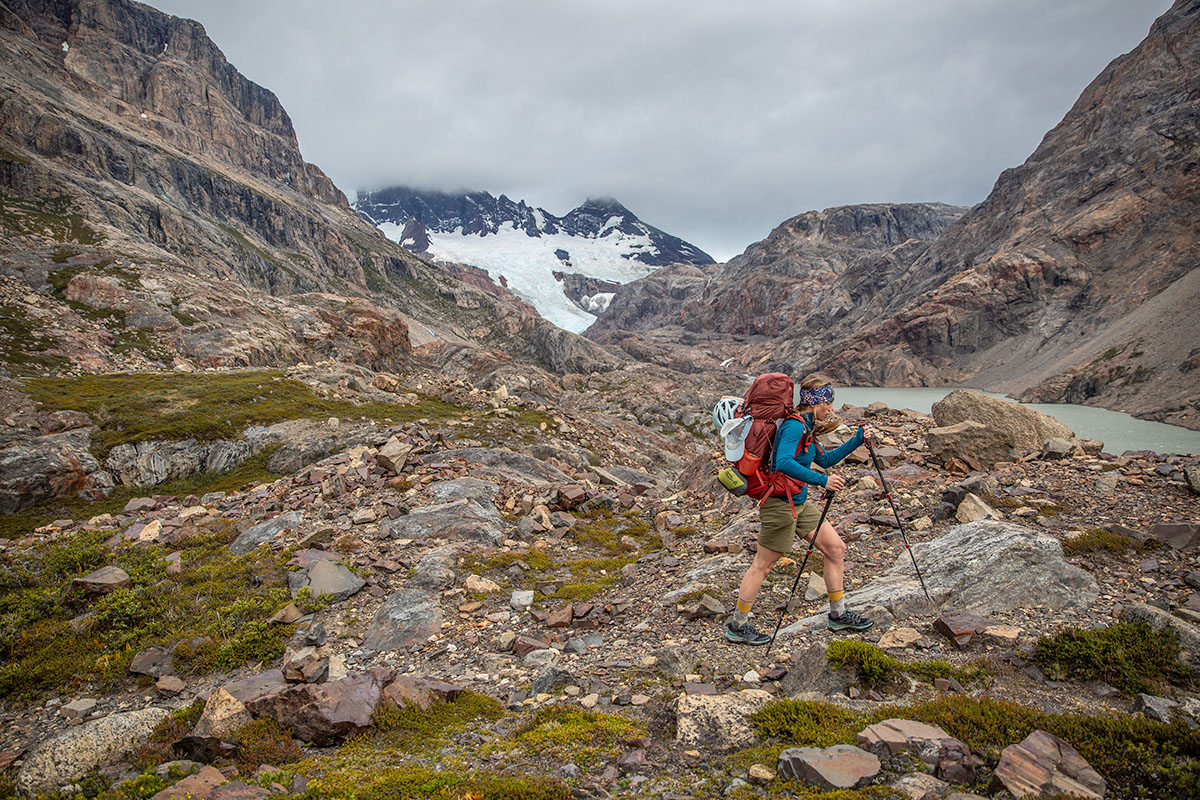
Odor Prevention
Merino wool excels at pulling moisture away from your skin, leading to less sweat accumulation and, therefore, reduced odor retention. If you're heading on a multi-day backcountry trip and prefer not to pack multiple baselayers or rinse them frequently, merino is the best bet. Some synthetic options manage odor decently well, provided exertion levels are moderate. For instance, we’ve tested Patagonia’s Capilene Midweight on long hikes in cool weather and found it to be reasonably odor-resistant. But nothing compares to merino in keeping you both dry and fresh.
Merino: Very good
Blends: Good
Polyester: Not good
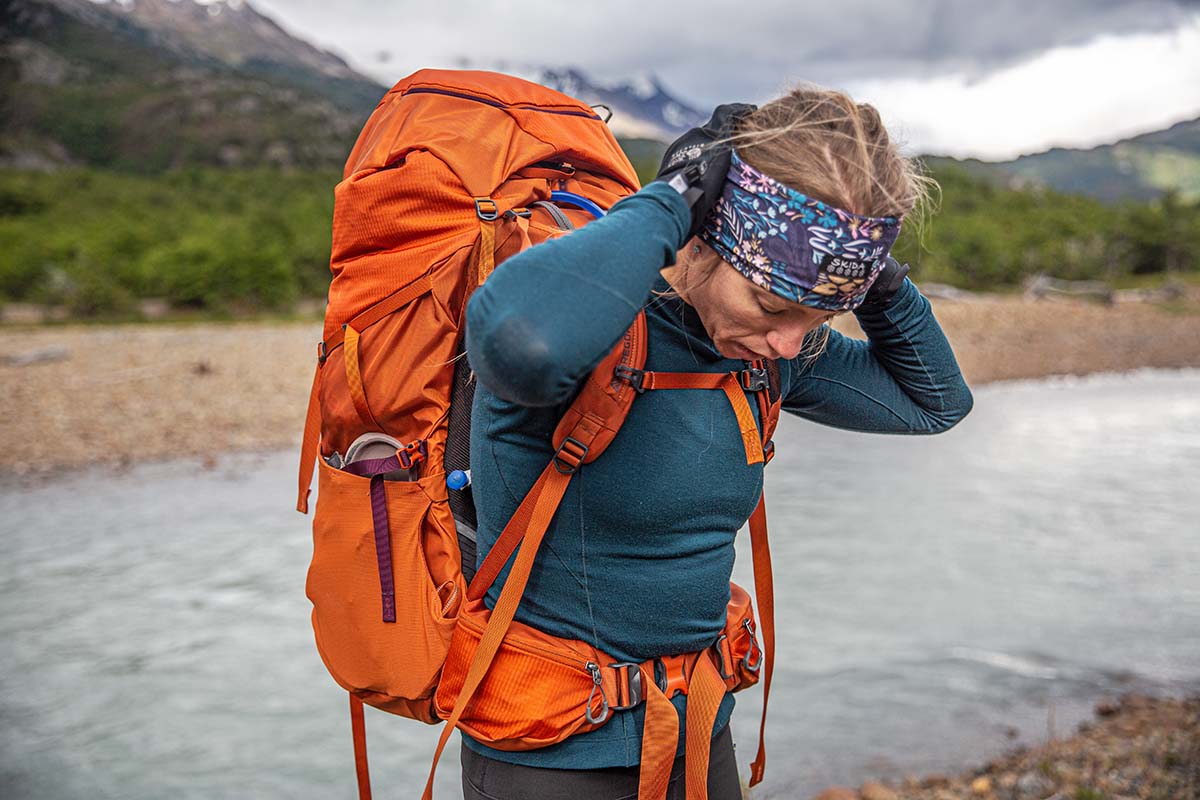
Durability
Here’s where merino falters: While incredibly soft, it tends to develop small holes over time, eventually affecting its performance. In contrast, synthetics typically endure multiple seasons of wear and tear. As a benchmark, we usually get one to two seasons out of a standard lightweight merino baselayer—even from reputable brands and when following proper care guidelines (cold wash and line dry). Conversely, with synthetic baselayers, one to two seasons would be the bare minimum, and three to four is often a more realistic timeline.
To enhance durability, some brands blend wool with synthetic fibers without sacrificing comfort. We've noticed little downside in terms of feel or performance, making merino/synthetic blends a viable option for added longevity. That said, when wearing a baselayer as a standalone piece, we always reach for a fully synthetic model like the NW Alpine Black Spider Hoody.
Polyester: Excellent
Blends: Very good
Merino: Not good
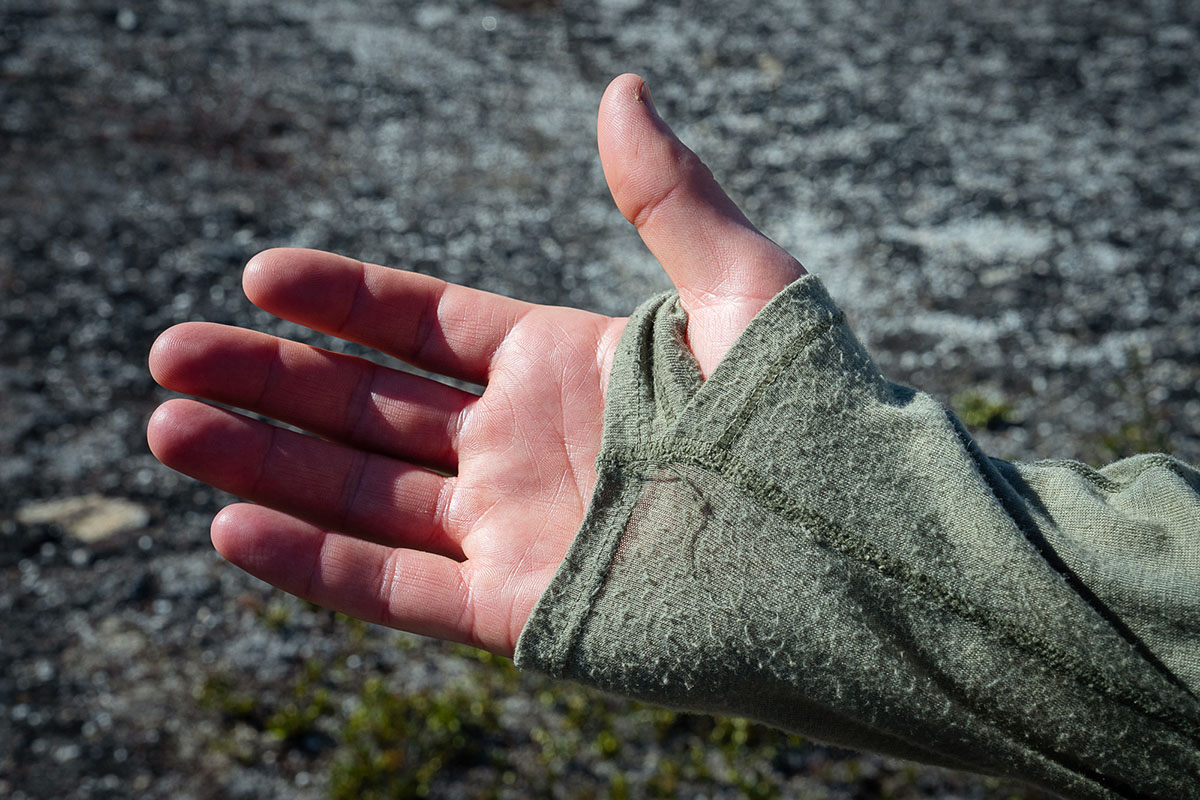
Warmth
Among all baselayer materials, merino delivers the best warmth-to-weight ratio. It traps heat significantly better than polyester or nylon. However, if using a baselayer as an outer layer, the situation shifts: Merino does little to block wind, whereas tightly woven polyester (like the Arc'teryx's Rho Heavyweight) has the ability to resist light gusts. Also, keep in mind that warmth correlates directly with fabric thickness, which we explore in the "Insulation Weight" section below.
Merino: Excellent
Blends: Very good
Polyester: Good
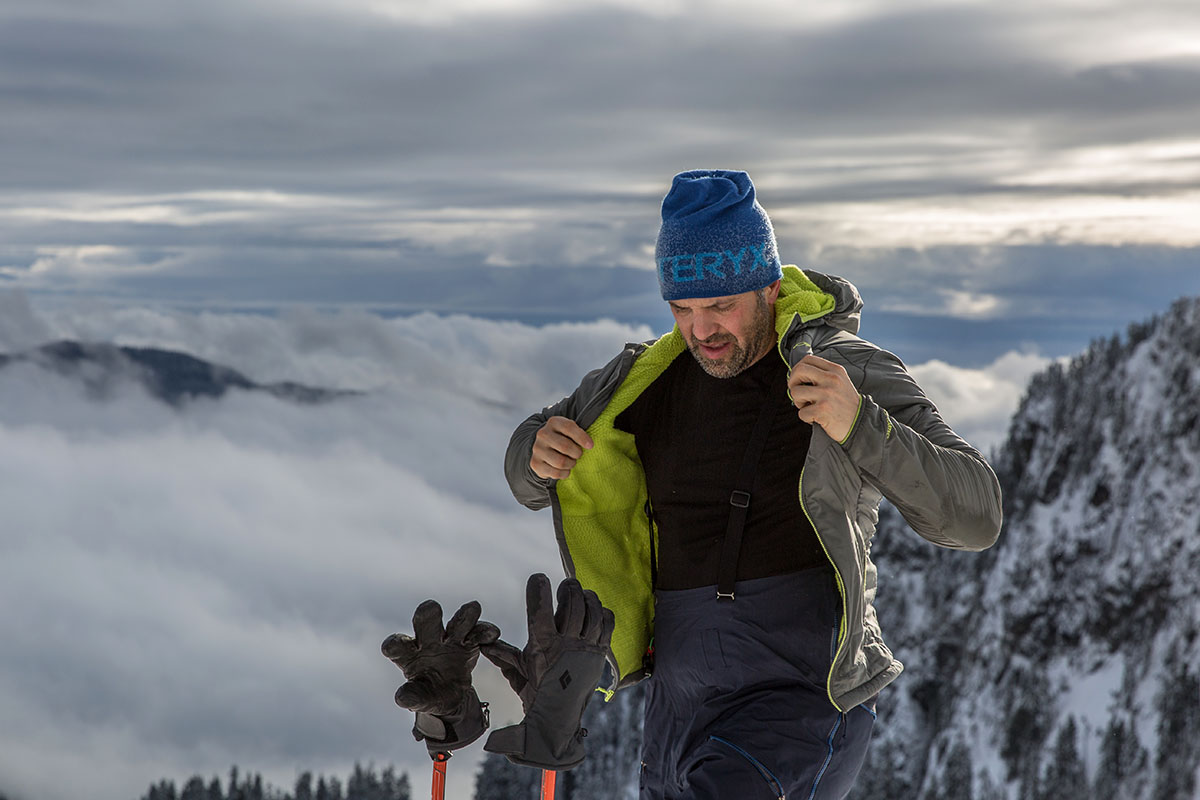
Lightweight
The most breathable but least insulative, lightweight baselayers excel for spring skiing, sunny days, and high-exertion activities like Nordic skiing and winter running. That said, thin merino can be surprisingly warm for its weight, which you’ll want to keep in mind depending on your use. Additionally, the thinner the merino, the more fragile it becomes, which is why most lightweight options are made with at least some synthetic material(s). A standout in this category is the Outdoor Research Echo Hoodie, which can even pull double duty as a sun shirt in the summer. For colder conditions, upgrading to a midweight baselayer is wise.
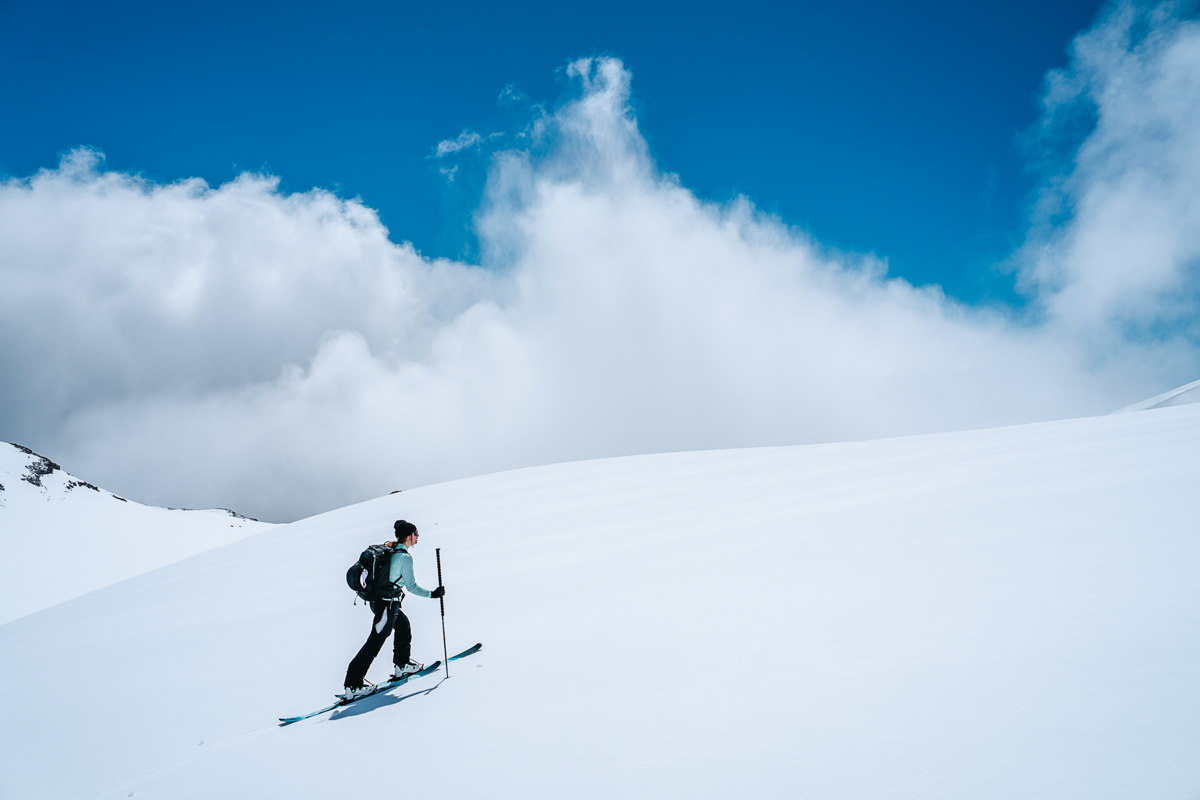
Midweight
For versatility across different climates, midweight baselayers are the best bet. They provide enough insulation for colder temperatures while remaining breathable enough for movement. High-quality merino or polyester models in this category are popular among downhill skiers—warm enough for the lift ride up but not overly hot for the descent. However, for hiking or ski touring in moderate conditions, midweight designs can be excessive, as added warmth compromises temperature regulation. Instead, they shine in cooler shoulder-season conditions and make for an ideal next-to-skin layer when resort skiing in the depths of winter.
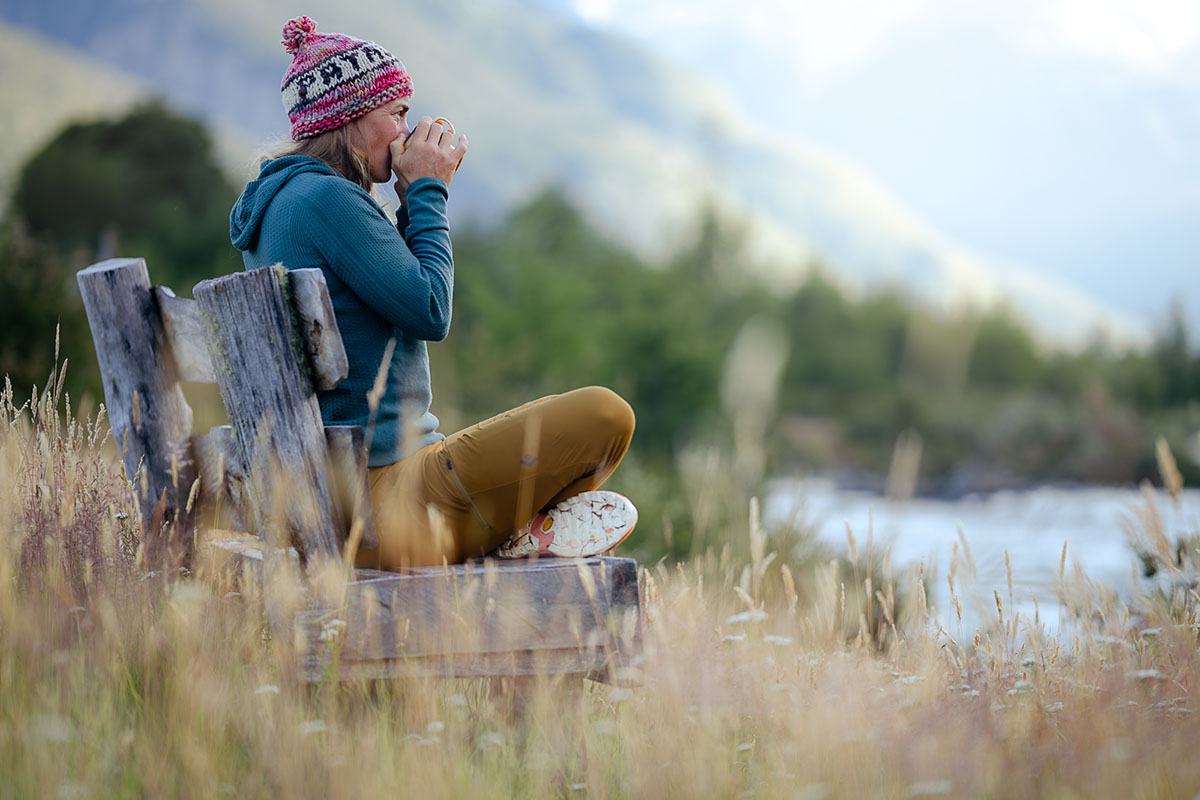
Heavyweight
Reserved for extremely cold environments or times when you'll be mostly sedentary, heavyweight baselayers prioritize insulation over breathability. It’s easy to overheat in these pieces, even during light movement. Remember, layering provides flexibility—you can always add more warmth over a thinner baselayer rather than relying solely on a heavyweight piece. That said, for extreme cold, winter camping, or low-exertion activities, a heavyweight baselayer can be incredibly cozy. In this category, the Arc'teryx Rho Heavyweight and Kari Traa Rose Half Zip offer an excellent mix of warmth and breathability.

Manufacturers specify baselayer fabric weights in grams per square meter (g/m² or GSM), which gives a good indication of warmth. The options we’ve highlighted above range from 125g/m² for the Helly Hansen Lifa Stripe Crew to 250g/m² for the Smartwool Classic Thermal 1/4 Zip (though not all brands disclose this measurement). On the lighter side, the Lifa Stripe Crew and The North Face Summit Series Pro 120 (132g/m²) are excellent for milder temperatures and intense activities, while thicker models like the Classic Thermal are ideal for deep winter conditions. That said, fabric weight doesn’t always directly translate to warmth—factors like fit and material type also play a role (for instance, 1g merino wool generally offers more warmth than 1g polyester).
Most baselayers are available in various styles, including long-sleeve crewnecks and quarter- or half-zip designs. While crewnecks are popular, zippered options have their advantages. A zipper provides a way to regulate temperature—zip up for extra warmth or unzip when you start to overheat. Plus, a zippered baselayer can be removed without taking off your helmet. The added coverage from a raised collar also boosts warmth, and many zippered styles transition well to casual wear. However, unzipped collars can flap around when running, and some find the zipper less comfortable against their skin compared to a simple crewneck.
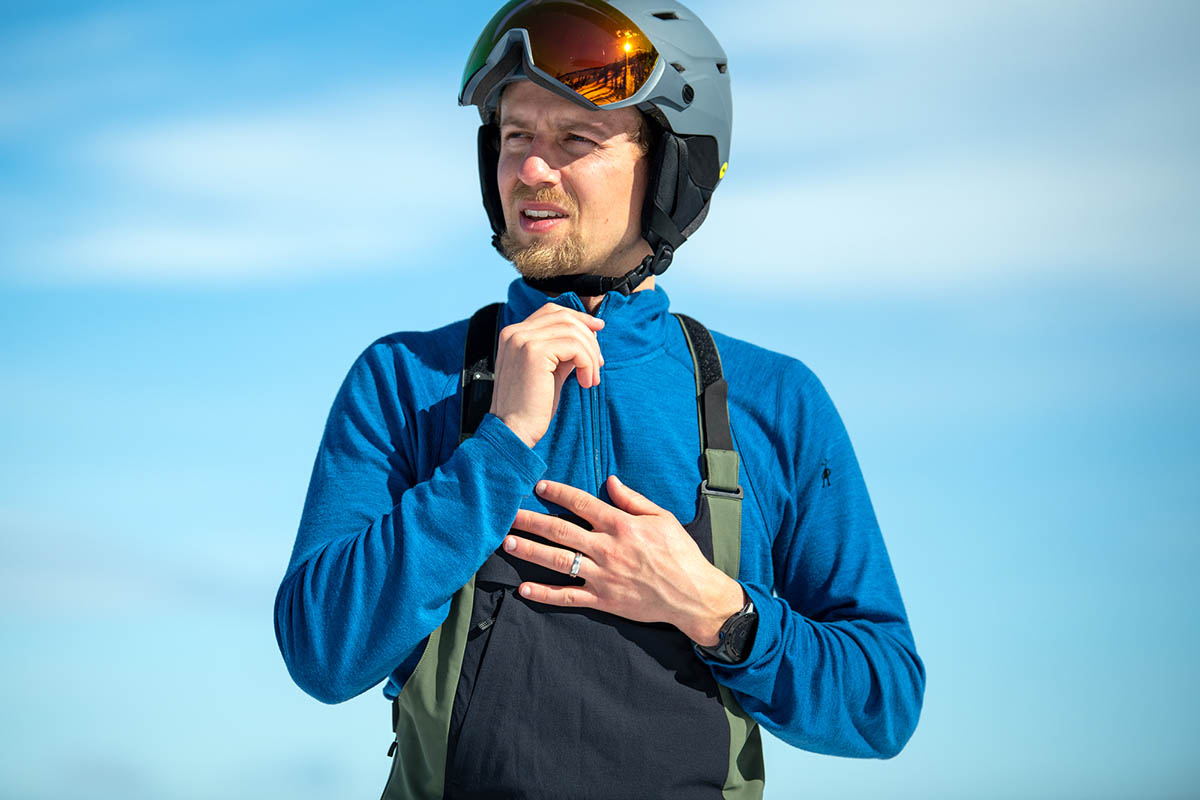
For the best performance, a baselayer should fit snugly to maximize moisture wicking and insulation. Some folks prefer wearing their baselayers casually, in which case a performance-oriented fit—like the Smartwool Intraknit Thermal—may feel too restrictive. Looser-fitting baselayers sacrifice some breathability and moisture-wicking ability but offer more versatility for everyday wear. Ultimately, choosing the right fit depends on personal preference and intended use.

Baselayers can be as minimalist as a simple crewneck (such as the Patagonia Capilene Midweight) or more feature-rich with hoods, zippered pockets, and thumb loops (like the NW Alpine Black Spider Hoody). If you’ll be layering overt op, a basic design works well. But for those wearing their baselayer as an outer layer, features like pockets and thumb loops add convenience. Climbers and skiers may also benefit from hoods or balaclavas designed to fit underneath their helmets. Some baselayers even offer sun protection, which is denoted by a UPF rating. Consider your intended use before selecting which features matter most.
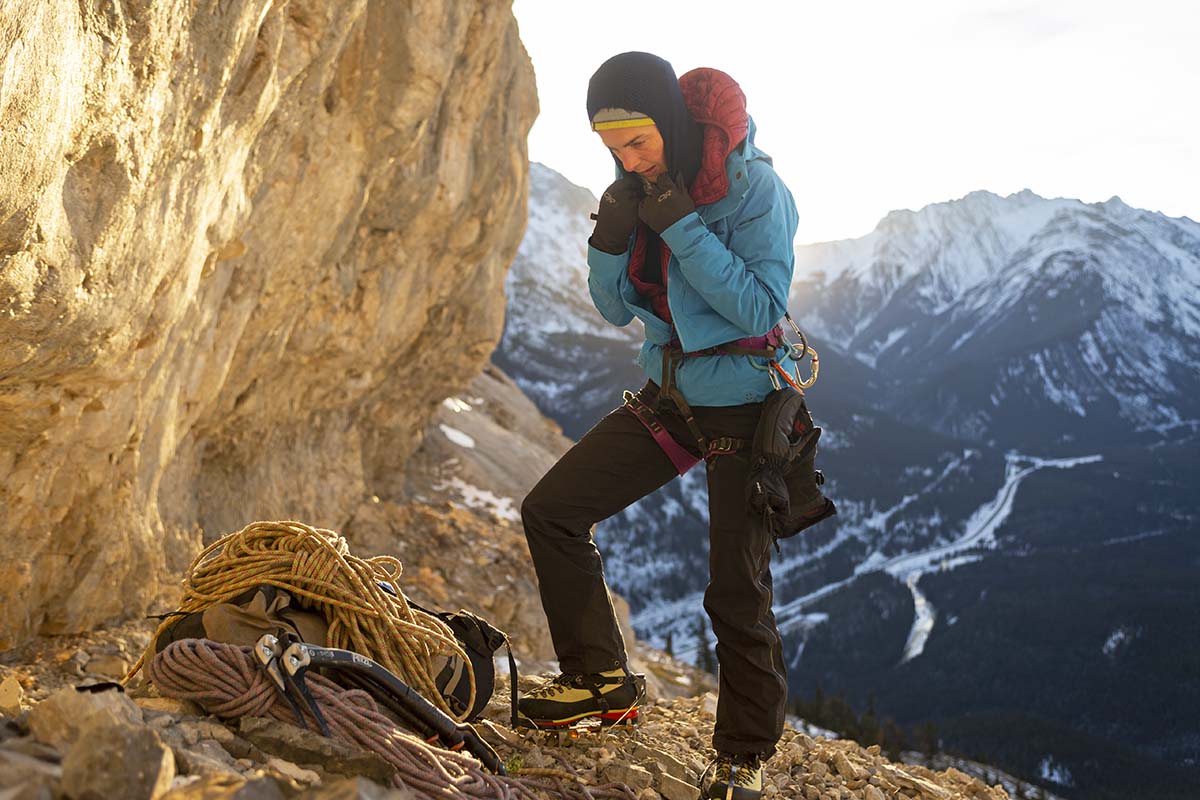
Sustainability is becoming an increasingly important consideration for consumers of outdoor gear, and we're happy to see many leading baselayer manufacturers rising to the occasion. Two major trends include responsibly sourced wool and recycled synthetics. The former is often certified by organizations like the Responsible Wool Standard or ZQ-certified wool, ensuring the ethical treatment of sheep and environmentally responsible practices. Some brands also emphasize transparent and local supply chains—Icebreaker, for example, sources all its wool from farms in New Zealand. Recycled synthetics are also growing in popularity, reducing reliance on fossil fuels and cutting plastic waste. We appreciate these initiatives and hope to see more brands follow suit.
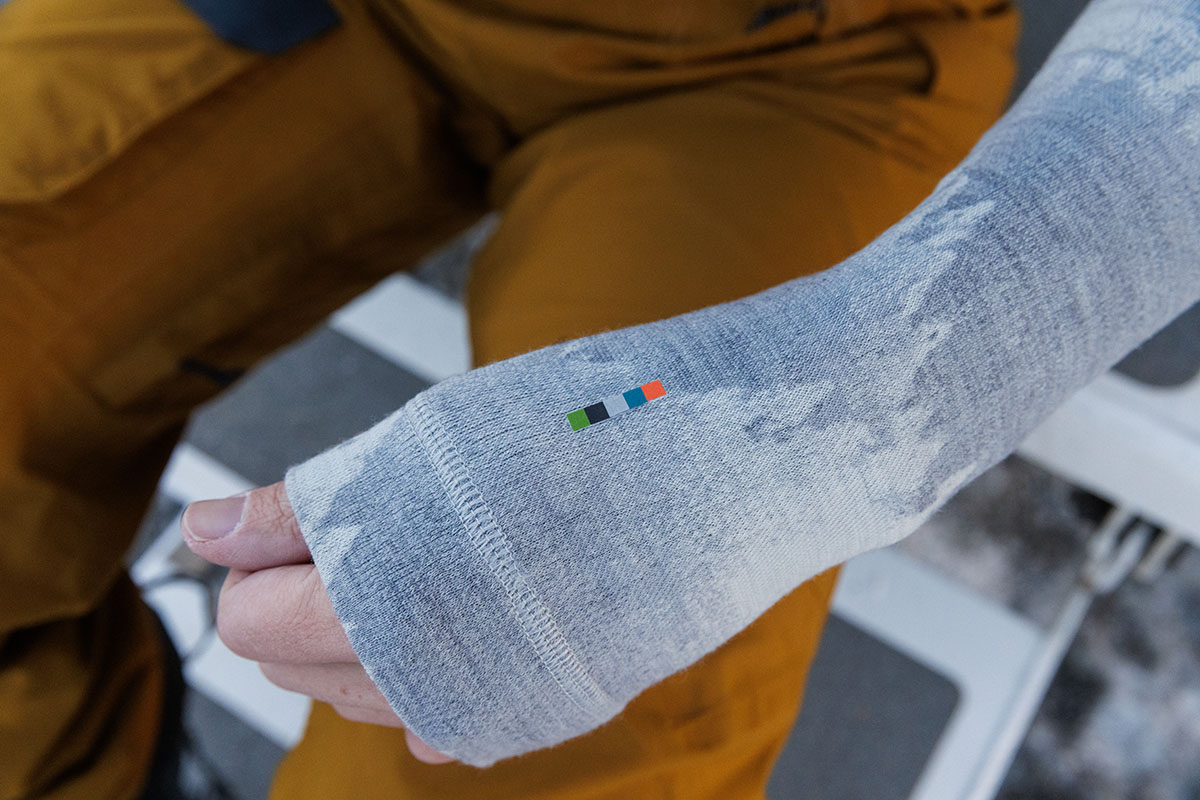
Most baselayers featured here have matching bottoms with the same construction and similar pricing. Since tops are generally more popular, they take priority in our guide, but the corresponding bottoms share the same benefits and drawbacks. Keeping your core warm is more critical to overall comfort than insulating your legs, but given the comfort of a quality pair of long johns, we’re big advocates of baselayer bottoms as well.
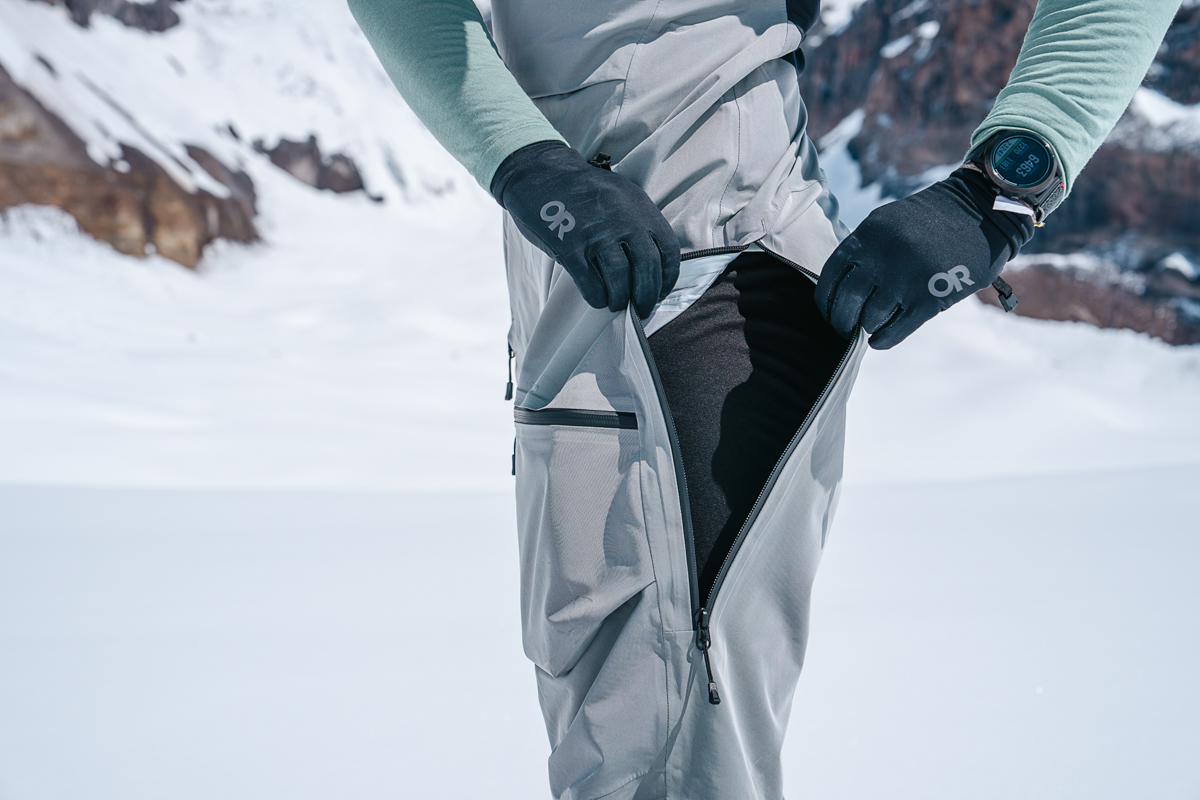
Proper care can significantly extend the lifespan of your baselayers, especially if they’re made from merino wool. As with most wool garments, we recommend washing merino baselayers in cold water and air-drying them. While some manufacturers claim their merino layers are dryer-safe, machine drying can lead to pilling and shrinkage. Another consideration is thickness: Lighter merino baselayers, such as the Smartwool Classic All-Season, tend to wear out faster in high-friction areas like the cuffs and shoulders. Synthetic baselayers, on the other hand, are much easier to maintain—just toss them in the machine with the rest of your laundry.
To maximize the effectiveness of your clothing, it's helpful to think of your gear as a complete system. Each layer depends on the others to perform optimally. For example, even the best moisture-wicking baselayer won’t keep you dry if your mid- or outer layer traps moisture. In other words, it's important to invest in high-quality pieces that complement your baselayer’s performance.
Baselayers
A baselayer’s main job is to provide warmth while effectively managing moisture. Whether made of merino wool, polyester, nylon, or a blend, a baselayer retains body heat while wicking away sweat. These two functions go hand in hand—staying dry is key to staying warm. Baselayers are typically worn underneath a midlayer or shell in winter, but they also work well as standalone pieces in milder conditions for activities like hiking, biking, and climbing. The thickness and material type greatly impact both warmth and breathability, so keep these factors in mind when selecting a baselayer.
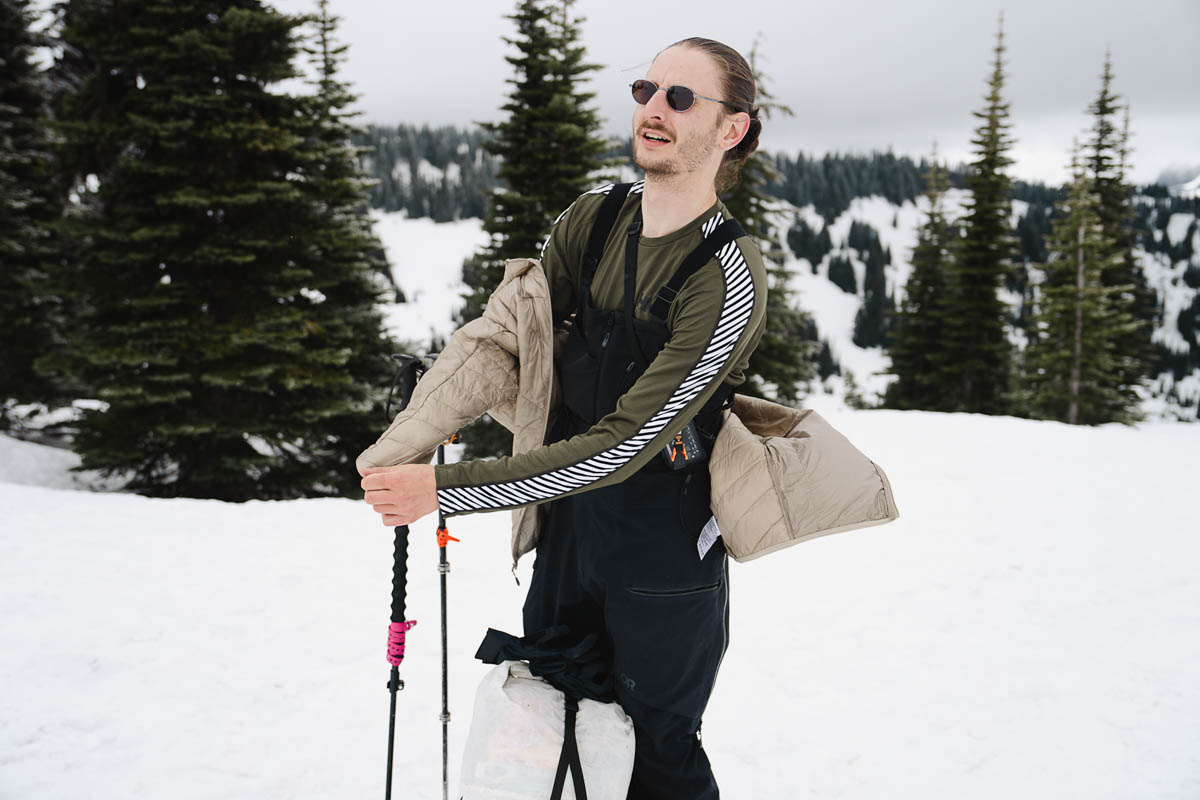
Midlayers
For active pursuits like hiking, backpacking, and climbing, breathability is crucial. A fleece or synthetic jacket offers the best balance of warmth and ventilation. Top performers include the Arc’teryx Atom and Patagonia’s R-series fleeces. If you’ll only wear an insulating layer when stationary—such as at camp after sundown—a down jacket provides superior warmth and packability. The same applies to skiing: Midlayer choice depends on the conditions. Options range from lightweight fleece pullovers to heavily insulated down jackets.

Outer Layers
Outer layers are the most specialized component of your layering system and often the most expensive. For hiking and backpacking, a waterproof, breathable, and packable rain jacket is essential. Winter conditions demand more robust designs, making durability a top priority for ski jackets. These typically feature extra pockets for gear storage and a longer cut to keep snow from getting inside. Some hardshell jackets blur the lines, combining the weight of a rain jacket with the weather protection (and higher cost) of a ski shell.
Back to Our Top Baselayer Picks Back to Our Baselayer Comparison Tables